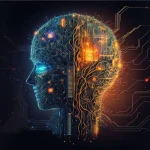The political landscape of the United States is a tapestry woven with threads of triumph and turmoil, unity and division, hope and disillusionment. As we embark on this journey through the intricacies of American politics, it is crucial to understand the historical foundations that have shaped the present, the current challenges that define our era, and the aspirations that guide us toward the future.
Historical Foundations: The Birth of a Democratic Experiment
The story of American politics begins with the revolutionary spirit of the 18th century when thirteen colonies dared to challenge the might of the British Empire. The Declaration of Independence in 1776 was not just a statement of freedom but a radical assertion of human rights and self-governance. The subsequent Constitution of 1787 laid down a framework that balanced power among the executive, legislative, and judicial branches, ensuring that no single entity could dominate.
However, this founding document was far from perfect. It was a product of its time, marred by compromises on issues like slavery and the disenfranchisement of women and minorities. The subsequent centuries have seen the Constitution tested and amended, as America grappled with the Civil War, civil rights movements, and the struggle to extend liberty and justice to all its citizens.
The Two-Party System: A Double-Edged Sword
American politics has long been dominated by a two-party system: the Democratic Party and the Republican Party. This system has its roots in the early 19th century, evolving from the Federalist and Anti-Federalist debates. While the two-party structure simplifies the electoral process and provides clear choices, it also fosters a binary view of politics, often reducing complex issues to black-and-white arguments.
The Democratic Party, traditionally associated with progressive and liberal policies, has championed social justice, labor rights, and expanded government intervention in the economy to address inequality. The Republican Party, on the other hand, has generally advocated for limited government, free-market capitalism, and conservative social values.
While these distinctions provide a broad understanding, the reality is far more nuanced. Both parties have undergone significant transformations over the years, shaped by internal dynamics and external pressures. The Democrats, once the party of the southern segregationists, reinvented themselves during the civil rights era. The Republicans, traditionally the party of Abraham Lincoln, have seen their own shifts, particularly with the rise of the conservative movement in the late 20th century.
The Modern Political Climate: Polarization and Partisanship
Today, American politics is characterized by deep polarization. The 21st century has seen an intensification of partisan divides, fueled by economic anxieties, cultural clashes, and the rise of digital media. This polarization is not just a matter of differing opinions but has often translated into outright hostility between factions.
The 2016 election of Donald Trump marked a significant turning point. His presidency was a lightning rod for controversy, galvanizing a base of supporters disillusioned with the political establishment while provoking intense opposition. Trump’s unorthodox style, confrontational rhetoric, and policy decisions, from immigration bans to tax cuts, polarized the nation further.
The 2020 election, conducted amid a global pandemic and widespread social unrest, underscored these divisions. Joe Biden’s victory was seen by many as a return to political normalcy, yet the narrow margins and subsequent events, including the Capitol riot on January 6, 2021, revealed a deeply fractured society.
The Role of Media: Information and Disinformation
The media landscape has played a crucial role in shaping political discourse. Traditional news outlets, social media platforms, and alternative news sources create an information ecosystem that can both inform and mislead. The proliferation of “fake news,” echo chambers, and the manipulation of information have exacerbated mistrust and misinformation.
Cable news channels often cater to specific ideological audiences, reinforcing partisan views rather than fostering informed debate. Social media algorithms prioritize sensational content, which can spread falsehoods faster than facts. This environment makes it challenging for citizens to discern truth from fiction, contributing to the erosion of trust in institutions and each other.
Social Issues and Movements: Voices for Change
American politics cannot be fully understood without acknowledging the social issues and movements that continually reshape it. The Black Lives Matter movement, #MeToo, LGBTQ+ rights, and climate activism are not just social causes but powerful political forces.
These movements have highlighted systemic inequalities and demanded significant policy changes. They have also faced backlash, illustrating the ongoing cultural battles within the nation. The struggle for racial justice, for instance, has forced a reckoning with America’s history of slavery and segregation, challenging long-held narratives and pushing for transformative change.
Economic Disparities: The Wealth Gap
Economic inequality remains a persistent challenge. The gap between the wealthy and the poor has widened, with significant implications for political stability and social cohesion. The debates over taxation, healthcare, education, and the minimum wage are fundamentally about how to create a fair and just society.
The Great Recession of 2008 and the COVID-19 pandemic have both laid bare the vulnerabilities and inequities within the American economy. While Wall Street rebounded, Main Street struggled, highlighting a disconnect that fueled populist sentiments on both the left and the right.
Immigration: The American Dream and Its Discontents
Immigration has always been a cornerstone of America’s identity, yet it remains a contentious issue. The debate often centers on the balance between welcoming newcomers and securing borders. Policies under different administrations reflect this tension, from Obama’s DACA program to Trump’s border wall.
Immigrants bring diversity and dynamism, but they also highlight challenges related to integration and resource allocation. The issue of undocumented immigrants, asylum seekers, and refugees continues to be a flashpoint in national politics, influencing elections and shaping public policy.
Foreign Policy: Leadership and Isolationism
American foreign policy has oscillated between interventionism and isolationism. As a global superpower, the U.S. has played a pivotal role in shaping international relations, from World War II and the Cold War to the War on Terror and the current geopolitical tensions with China and Russia.
The debate over America’s role in the world is ongoing. Should the U.S. act as a global policeman, promoting democracy and human rights, or should it prioritize domestic issues and adopt a more restrained approach? Recent administrations have reflected different philosophies, with Trump favoring an “America First” stance and Biden seeking to rebuild alliances and multilateral cooperation.
The Judiciary: Guardians of the Constitution
The Supreme Court and the broader judiciary play a crucial role in interpreting the Constitution and shaping American law. Judicial appointments have become highly politicized, with significant implications for issues like reproductive rights, gun control, and healthcare.
The confirmation battles, particularly for Supreme Court justices, reflect the high stakes involved. Decisions made by the Court can have far-reaching consequences, influencing the political landscape for generations.
Education and Misinformation: The Battle for Minds
Education is a fundamental pillar of democracy, yet it has become a battleground in the culture wars. Debates over curriculum, the teaching of history, and the role of education in fostering civic responsibility are intensely polarized. Issues like the teaching of critical race theory and sex education have sparked heated controversies.
The quality of education and access to it also reflect broader socio-economic disparities. Public education in America varies widely in quality, often reinforcing existing inequalities. The rise of misinformation and the declining trust in scientific and academic expertise further complicate the landscape.
The Path Forward: Bridging Divides and Building Trust
Despite the challenges, there is hope. The resilience of American democracy lies in its ability to adapt and reform. The energy and activism of younger generations, the increasing diversity of political representation, and the potential for technological advancements to enhance civic engagement all offer pathways to renewal.
Bridging divides requires dialogue and empathy. It demands that we see beyond partisan labels and recognize our shared humanity. Building trust in institutions and each other is essential, and this starts with education, transparency, and accountability.
Conclusion: The Unfinished Experiment
American politics is an ongoing experiment, a journey marked by progress and setbacks. It reflects the best and worst of human nature, the aspirations for a just society, and the conflicts that arise in pursuit of that ideal. As we navigate the complexities of this landscape, it is crucial to remain engaged, informed, and hopeful.
The story of American politics is not just about politicians and policies; it is about people. It is about us—our dreams, fears, and hopes. It is about the continual effort to create a more perfect union, knowing that while the path may be fraught with challenges, the destination is worth the struggle.
In this journey, every voice matters, every vote counts, and every action contributes to the larger narrative. As we look to the future, let us remember the lessons of the past, embrace the possibilities of the present, and work together towards a brighter, more inclusive tomorrow.
Get More Updates: https://www.timelinetale.com/







